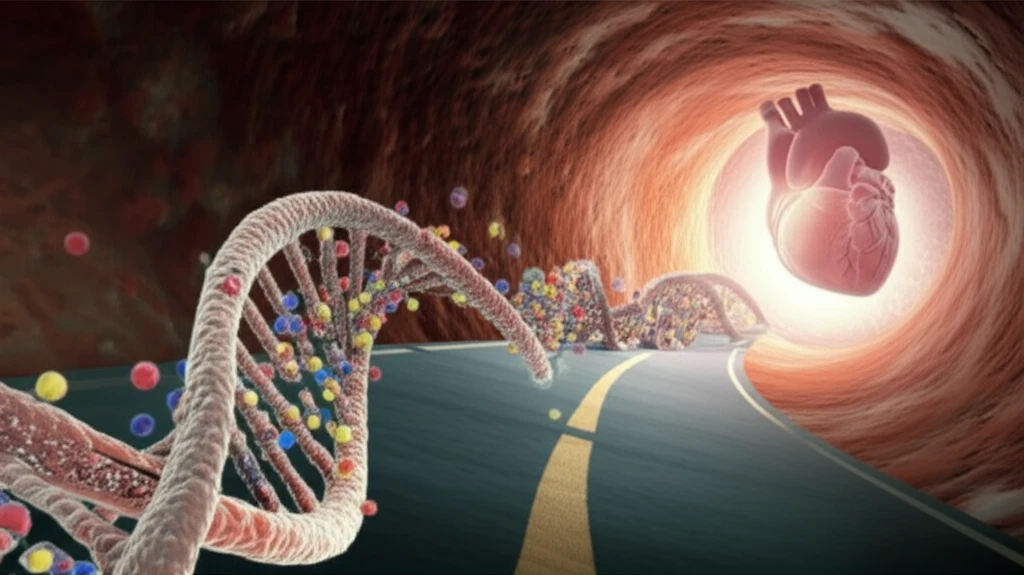
Decoding Atherosclerosis: How DNA Methylation Holds the Key to Prevention
"Unlocking the secrets of DNA methylation could revolutionize our approach to preventing and treating heart disease. Discover the latest insights into this cutting-edge field."
For over a century, scientists have been unraveling the complexities of cardiovascular diseases (CVD), and new discoveries at the molecular level continue to reshape our understanding. While genetics play a role, explaining only a fraction of the risk, the dynamics of epigenome modifications, particularly DNA methylation, are emerging as key players in reshaping pathological processes in CVD.
DNA methylation, a major epigenetic regulator, influences cell-type specific gene expression in mural cells. However, the precise role of DNA methylation, specifically hyper- and hypomethylation, in CVD pathology remains a topic of intense investigation. Recent research suggests that DNA hypomethylation, the loss of methyl cytosines, is a prominent feature of atherosclerosis, while certain genes become hypermethylated as the disease advances in medium-sized and large arteries.
This article highlights recent, groundbreaking findings that connect alterations in DNA methylation to atherogenesis, the development of fatty plaques in arteries. By exploring these connections, we can identify potential new avenues for treatments and preventative measures, opening doors to a future where personalized interventions mitigate the risk of heart disease.
DNA Methylation: The Conductor of Gene Expression in Atherosclerosis

DNA methylation is a dynamic process that involves adding or removing methyl groups to DNA, thereby affecting gene expression without altering the underlying DNA sequence. This process is crucial in regulating various cellular functions, and its dysregulation has been implicated in numerous diseases, including atherosclerosis.
- De Novo Methylation: Carried out by DNMT3A/3B, this process establishes new methylation patterns, particularly during embryonic development. However, ongoing de novo methylation also occurs in adults, contributing to the evolving landscape of DNA methylation in atherosclerosis.
- Maintenance of Methylation: DNMT1 ensures that methylation patterns are faithfully copied during cell division, preserving cell identity and function. However, this process can also perpetuate aberrant methylation patterns in diseased cells.
- Demethylation: TET1-3 enzymes oxidize 5mC to 5hmC, 5fC, and 5caC, which can then be removed via the base-excision repair (BER) pathway. Demethylation plays a critical role in activating enhancers and promoting chromatin unfolding, influencing gene expression in atherosclerosis.
- Readers, Writers, and Erasers: The interplay of methyl cytosine writers, readers, and erasers determines the overall DNA methylation landscape. Disruptions in this balance can lead to altered gene expression and contribute to the development of atherosclerotic lesions.
The Future of Atherosclerosis Treatment: Targeting DNA Methylation
As research continues to unravel the complexities of DNA methylation in atherosclerosis, promising new therapeutic avenues are emerging. Interventions that target DNA methylation processes, such as stimulating mitochondrial biogenesis, preventing cellular senescence, and restoring the epigenetic clock, hold great potential for preventing and treating this disease. While challenges remain, the future of atherosclerosis treatment lies in harnessing the power of epigenetics to develop personalized and effective therapies.
